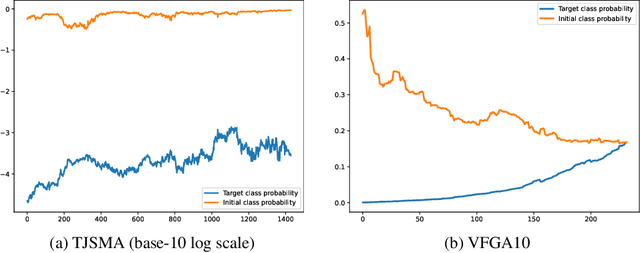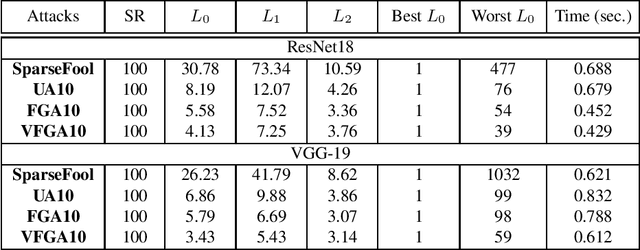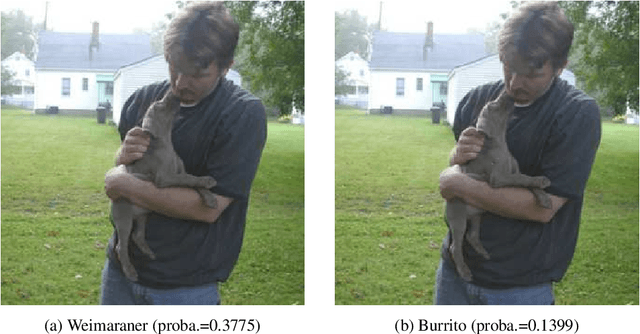Théo Combey
Stochastic sparse adversarial attacks
Nov 24, 2020



Abstract:Adversarial attacks of neural network classifiers (NNC) and the use of random noises in these methods have stimulated a large number of works in recent years. However, despite all the previous investigations, existing approaches that rely on random noises to fool NNC have fallen far short of the-state-of-the-art adversarial methods performances. In this paper, we fill this gap by introducing stochastic sparse adversarial attacks (SSAA), standing as simple, fast and purely noise-based targeted and untargeted attacks of NNC. SSAA offer new examples of sparse (or $L_0$) attacks for which only few methods have been proposed previously. These attacks are devised by exploiting a small-time expansion idea widely used for Markov processes. Experiments on small and large datasets (CIFAR-10 and ImageNet) illustrate several advantages of SSAA in comparison with the-state-of-the-art methods. For instance, in the untargeted case, our method called voting folded Gaussian attack (VFGA) scales efficiently to ImageNet and achieves a significantly lower $L_0$ score than SparseFool (up to $\frac{1}{14}$ lower) while being faster. In the targeted setting, VFGA achives appealing results on ImageNet and is significantly much faster than Carlini-Wagner $L_0$ attack.
Probabilistic Jacobian-based Saliency Maps Attacks
Jul 12, 2020



Abstract:Machine learning models have achieved spectacular performances in various critical fields including intelligent monitoring, autonomous driving and malware detection. Therefore, robustness against adversarial attacks represents a key issue to trust these models. In particular, the Jacobian-based Saliency Map Attack (JSMA) is widely used to fool neural network classifiers. In this paper, we introduce Weighted JSMA (WJSMA) and Taylor JSMA (TJSMA), simple, faster and more efficient versions of JSMA. These attacks rely upon new saliency maps involving the neural network Jacobian, its output probabilities and the input features. We demonstrate the advantages of WJSMA and TJSMA through two computer vision applications on 1) LeNet-5, a well-known Neural Network classifier (NNC), on the MNIST database and on 2) a more challenging NNC on the CIFAR-10 dataset. We obtain that WJSMA and TJSMA significantly outperform JSMA in success rate, speed and average number of changed features. For instance, on LeNet-5 (with $100\%$ and $99.49\%$ accuracies on the training and test sets), WJSMA and TJSMA respectively exceed $97\%$ and $98.60\%$ in success rate for a maximum authorised distortion of $14.5\%$, outperforming JSMA with more than $9.5$ and $11$ percentage points. The new attacks are then used to defend and create more robust models than those trained against JSMA. Like JSMA, our attacks are not scalable on large datasets such as IMAGENET but despite this fact, they remain attractive for relatively small datasets like MNIST, CIFAR-10 and may be potential tools for future applications.
 Add to Chrome
Add to Chrome Add to Firefox
Add to Firefox Add to Edge
Add to Edge